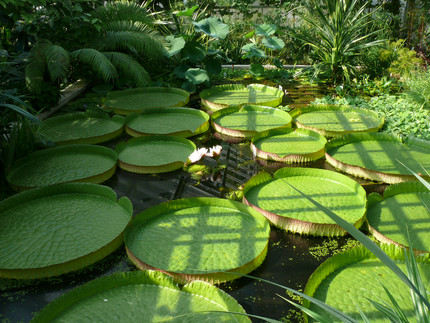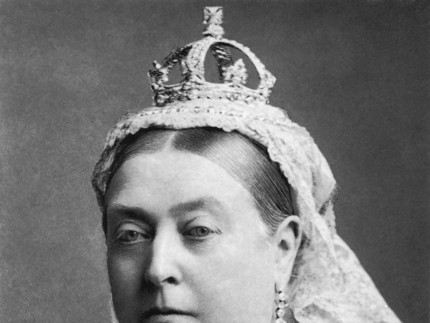What does Victoria have to do with colonialism?
Victoria was Queen of the United Kingdom of Great Britain and Ireland from 1837 to 1901, and also Empress of India as from 1877. During her reign, the British Empire transformed from a trading power into the most powerful empire in the world.1,3
As a convinced colonialist, Victoria supported her government's expansive colonial policy. The primary goal was to increase the prosperity of the British Empire. During her reign, permanent wars were waged against the people in the colonized territories, and they were brutally subjugated.1,2
Victoria is the namesake of the Giant Water Lily of the genus Victoria and the building that harbors it, Victoria House. The naming after the queen of the British Empire sparked an enthusiasm for this plant that is hardly imaginable today. This also illustrates the prominent role of plants in the power politics of the time.4 Victoria's name was also used for many other names on the African continent, such as for the great waterfalls of the Zambezi River on the border of the present-day states of Zambia and Zimbabwe and for Lake Victoria, now part of the states of Tanzania, Uganda, and Kenya. There is a petition5 launched three years ago calling for the lake to be given an African name again and thus to remove this "colonial monument." That way, the African countries should get back their power and decide for themselves in which African language an official renaming should take place.5
The Giant Water Lily originates from South America. Besides Victoria cruziana, the even larger species V. amazonica also belongs to it. Only recently was a third species described, V. boliviana, and even the existence of a fourth made likely.6 Giant Water Lilies require a great deal of light and for this reason they are very difficult to cultivate in the greenhouse during winter; they are usually grown each year from seed.4
References
[1] Blakemore, Erin (2021): Queen Victorias Neuauflage der britischen Monarchie. National Geographic. Online verfügbar unter www.nationalgeographic.de/geschichte-und-kultur/2021/04/queen-victorias-neuauflage-der-britischen-monarchie, zuletzt geprüft am 08.02.2023.
[2] ZDF-History (2023): Queen Victoria – Die wahre Geschichte. Online verfügbar unter www.zdf.de/dokumentation/zdf-history/queen-victoria--die-wahre-geschichte-100.html, zuletzt geprüft am 08.02.2023.
[3] Bundeszentrale für politische Bildung (2012): Kolonialismus. Unter Mitarbeit von Sebastian Conrad, Jürgen Zimmerer, Andreas Eckert, Aram Ziai, Nikita Dhawan, Martineau Sébastien et al. Bonn (Aus Politik und Zeitgeschichte, 44-45/2021). Online verfügbar unter www.bpb.de/shop/zeitschriften/apuz/146987/kolonialismus/, zuletzt geprüft am 08.02.2023.
[4] Kraft, Michael: Victoria cruziana. Eine tropische Riesenseerose im Botanischen Garten der Technischen Universität. Technische Universität Braunschweig. Braunschweig. Online verfügbar unter www.tu-braunschweig.de/index.php, zuletzt geprüft am 08.02.2023.
[5] Nembhard, Njeri: Rename & Reclaim Lake Victoria. Decolonizing Africa One Name At A Time. Online verfügbar unter www.change.org/p/kenyan-government-rename-lake-victoria-de-colonizing-africa, zuletzt geprüft am 10.02.2023.
[6] Smith, Lucy T. et al. (2022): Revised Species Delimitation in the Giant Water Lily Genus Victoria (Nymphaeaceae) Confirms a New Species and Has Implications for Its Conservation. Frontiers in plant Science 13:883151. doi: 10.3389/fpls.2022.883151.


